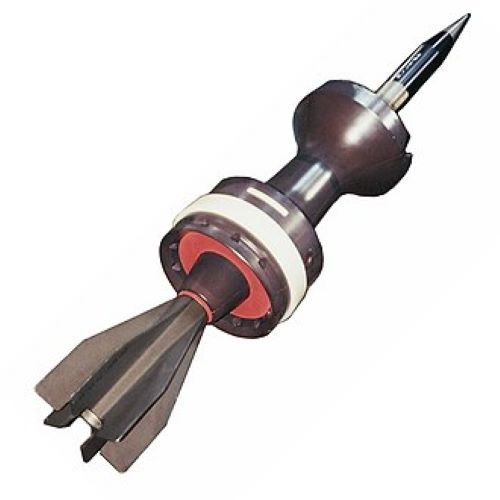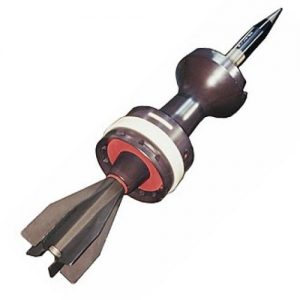Tungsten Penetrators: The Cutting Edge of Armor-Piercing Technology

Introduction:
In the world of military and defense, staying ahead of the curve is not just a goal; it's a necessity. One such area is in armor-piercing technology. Tungsten penetrators have emerged as the cutting edge of this field, offering unparalleled performance and capabilities. In this article, we will explore their histories, properties, applications, and how they have revolutionized armor-piercing technology.

A Kinetic Energy Penetrator
The Development of Penetrators:
The history of penetrators in military technology is a fascinating journey that spans centuries of innovation and advancement. Here's a concise overview of their historical development:
--Early Stages:
The earliest penetrators were basic projectiles, such as arrows and bolts, with sharpened tips designed to pierce armor. These early versions were employed in ancient warfare, with examples dating back to ancient China, Greece, and Rome.
During the Middle Ages, armor-piercing capabilities were improved with the development of crossbows and longbows. These weapons delivered greater force and penetration.
With the advent of firearms, penetrators took on new forms. Musket balls and bullets were designed with hardened steel cores to enhance their armor-piercing capabilities.
--Modern Penetrators:
The late 19th and early 20th centuries saw the emergence of modern armor-piercing ammunition. The introduction of composite shots, as mentioned earlier, marked a significant advancement. Tungsten cores became a favored choice for their density and hardness.
World War I and World War II witnessed the widespread use of tank rounds with penetrators. These rounds, designed to defeat enemy armor, played a crucial role in armored warfare.
--Other Advanced Materials:
Over time, specialized penetrators were developed for specific purposes. Examples include high-velocity armor-piercing (HVAP) rounds used by tank destroyers and shaped charge penetrators, such as HEAT (High-Explosive Anti-Tank) warheads.
In more recent decades, depleted uranium (DU) penetrators gained prominence for their exceptional density and ability to defeat modern armor. DU rounds were employed during the Gulf War and in subsequent conflicts.
Tungsten Penetrators: Advanced Materials
--The Remarkable Properties of Tungsten:
From early arrows to advanced materials and guidance systems, the evolution of penetrators has played a vital role in the development of modern weaponry. While tungsten forms the foundation of modern armor-piercing technology with its remarkable properties.
- Density: Tungsten is incredibly dense, surpassing even lead and steel. This density is a critical factor in armor penetration, as it allows projectiles to carry substantial kinetic energy.
- Hardness: Tungsten is one of the hardest materials on Earth. Its ability to maintain its shape and structural integrity under extreme pressure is vital for penetrating armored targets.
- High Melting Point: Tungsten boasts an extraordinarily high melting point, making it resistant to the intense heat generated during impact. This property ensures that the penetrator remains effective even in high-velocity scenarios.
--Applications of Tungsten Penetrators:
Tungsten penetrators find applications in various fields, with military and defense being at the forefront. Some key applications include:
- Anti-Tank Munitions: Tungsten penetrators are a core component of modern armor-piercing ammunition used by tanks and anti-tank missiles. Their ability to penetrate armored vehicles is crucial on the battlefield.
- Aircraft Munitions: Tungsten penetrators are also employed in aircraft munitions designed to pierce fortified bunkers and structures. These munitions deliver precision strikes with unmatched efficiency.
- Naval Warfare: Naval warfare has benefited from tungsten penetrators, which are used in anti-ship missiles. These projectiles ensure that naval vessels can strike their targets effectively, even if heavily armored.
The development of tungsten penetrators has transformed armor-piercing technology. As a result, a constant arms race between penetrators and armor materials continues to shape the military landscape.
--Penetrator Materials: Tungsten Penetrator Focus
- Tungsten Penetrator: Tungsten's exceptional density and hardness make it the top choice for modern kinetic energy penetrators, ensuring maximum armor-piercing capability.
- Depleted Uranium (DU): Offers high density and self-sharpening properties but faces environmental concerns compared to tungsten penetrators.
- Steel Alloys: Used in basic penetrators, though less effective than tungsten penetrators in modern applications.
- Composite Materials: Sometimes used but lack the unmatched performance of tungsten penetrators in delivering consistent results.
Tungsten remains the benchmark material for precision and efficiency in military applications.
Conclusion:
Tungsten penetrators are the embodiment of cutting-edge armor-piercing technology. Their extraordinary density, hardness, and high melting point make them indispensable in military applications. As technology advances, so does the potential for even more advanced and effective armor-piercing systems. In the ever-evolving world of defense, tungsten penetrators remain at the forefront of innovation, ensuring the balance of power remains dynamic and ever-changing.
With two decades of expertise in the field, Advanced Refractory Metals (ARM) is a trusted source for top-notch tungsten heavy alloys. We offer tungsten alloy (W-Ni-Fe & W-Ni-Cu) penetrators, which withstand the shock incurred while punching through armor plating. Customization is also welcome. Send us an inquiry if you are interested.
Reference:
[1] Kinetic energy penetrator. (2023, February 23). In Wikipedia. https://en.wikipedia.org/wiki/Kinetic_energy_penetrator
{{item.content}}
LEVE A REPLY
{{item.children[0].content}}
{{item.content}}






